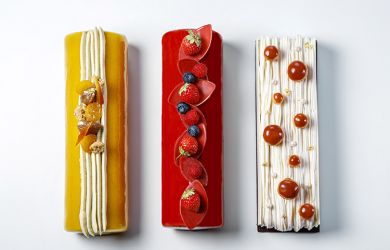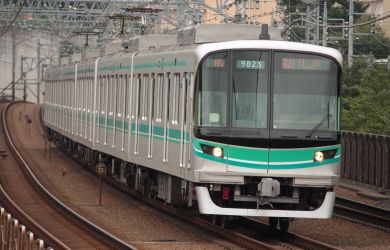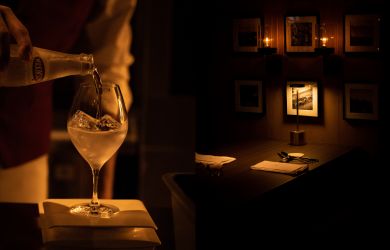
Originally published on metropolis.co.jp on June 2006

Photos by Stephen Mansfield
Sukhothai, at the middle of Thailand’s vast Central Plain, is as rich and fertile in history and cultural connections as its surrounding fields are plentiful in rice and fruit. The birthplace of the Thai nation, the name Sukhothai refers to three things: the rather ordinary, modern city; a period in Thai history; and the location of the outstanding Sukhothai Historical Park, a UNESCO World Heritage Site.
The Sukhothai Kingdom, which lasted just 200 years, is considered the peak of Thai civilisation. The period witnessed the flowering of Thai arts and classical culture, a level of artistic expression that has never been equaled. The city of Sukhothai, a name that translates as “the dawn of happiness,” was built during the time of Thailand’s first king, Intradit.
The temple complex was originally built in a mixture of Khmer, Mon and Sri Lankan styles, before the classic Sukhothai designs emerged. Typical of this style is the chedi, a tall, elegant tower, its top the shape of a lotus bud. The spiritual center of the kingdom was Wat Mahathat, a temple that contains some 200 chedis. The temple is especially beautiful at dawn and dusk, when its shape is silhouetted against a sky that mixes shades of pink, red and purple. During the November Loy Krathong (Festival of Lights), the building is lit up with hundreds of candles. Women in traditional dress make offerings of flowers and incense to the water spirits on this night of the full moon. It is a magical time to be in Sukhothai.
The park, a rectangular shape protected by earthen ramparts and a double moat, contains the ruins of roughly 20 temple complexes that have stood here at various stages during the last 600 years. The park is divided into five zones, with the Ramkamhaeng National Museum just inside the main gate. While visitors should certainly visit the museum to see its superb collection of bronze Buddha images, time is best spent wandering around the park admiring the ruins.
West of the park, at the feet of a low ridge of hills, is another crop of temples well worth exploring. Wat Saphan Hin is the most prominent, with its 12.5m high Buddha image called the Phra Attharot. Wat Chetuphon, with its friable Buddhas, is near here, while Wat Chedi Si Hong has an interesting brick chedi that is lined with stucco elephants. If you were to walk or cycle beyond the southern edges of Old Sukhothai, you would confront the steep hills of the Ramkamhaeng National Park, a large and wild reserve that is home to gaur, boar and serow.

In contrast, New Sukhothai, as the main town calls itself, antiseptically distanced from the majesty of its ruins, is a fairly typical riverine city. Too much traffic, rows of cement-faced Chinese shop-houses, garbage-strewn streets. Its saving graces are a lively riverside market, a large lotus pond and park, and many food stalls and fruit sellers. Among the mangoes, star fruit, coconuts and heaps of durian looking like disposed ordinance is the sapodilla, a brown tropical fruit associated with the town. Fibrous, with a dripping honey taste, the fruit cannot be exported in its fresh state because it spoils within a day. Its fleeting nature and rare taste make it the ultimate exotic fruit.
Sukhothai is more than just bricks and Buddhas. A slow walk around reveals a wealth of plants, flowers and trees growing among the watered ruins, creating a tropical pastoral. Teak, bamboo, flame trees, and palm are typical of Thailand’s climate and are well represented here. The banyan tree, with its thick trunk and ghostly branches that hang down in complex, spidery forms, is perhaps the most impressive. It is believed that spirits reside here, and many banyan trees have a small shrine at their base, colorfully decorated with food offerings and flower chains of jasmine or plumeria. Water is a constant feature of the area. In the dry months from December to April, the water levels of ponds and moats, the home of dragonflies, frogs and water beetles, drop. During the rainy season from June through to September, they overflow.

The work of UNESCO, and more recently the Japanese government, has succeeded in restoring Sukhothai’s brick buildings to their original state and in laying attractive grass lawns throughout the park. Getting to the site, which is 16km from the town of Sukhothai, is relatively easy. Songkraens—the Thai-style open-sided microbuses that look like trucks—carry visitors back and forth between the town and the heritage park every 10 minutes or so. While it is possible to rent bicycles, a pleasant way of exploring the temples, some of which are located a kilometer or two away from the main complex, I chose to walk, to absorb the sights slowly and to take in the natural setting of the park.
Such a pleasant environment suggests that both ordinary people and the nobility may have lived well during the Sukhothai period. An inscription on a stone dating from the time of Ramkamhaeng, Sukhothai’s second king, hints at this: “In the water, there are fish, in the paddies rice. The lord of the land does not raise taxes for his people taking cattle over his fields or horses over his lands. Those who want to play, play. Those who want to sing, sing. Those who want to laugh, laugh.”
Songkraens run from the town center to the park for 15 baht (about ¥45). Bicycles can be rented from shops along the main road just before the entrance. The Sukhothai Guest House (not in any of the guidebooks, so you’ll have to ask around) is a wonderful, centrally located family-run place with excellent food. Spotless bungalows with teak verandas go for 300-550 baht (¥900-¥1,600). The Thai Village House (Tel: 055-612275) is a similar arrangement, located in Old Sukhothai near the ruins, at 241 Chodwithithong Road. The cheapest places to eat here are the countless market stalls and open-fronted restaurants. The Dream Café and Antique House restaurants along Singhawat Road, with its 19th-century ambience, have an extensive Thai and Western menu.
[geo_mashup_map]




①_Panoramic-ViewDay1-Medium-390x250.jpeg)
